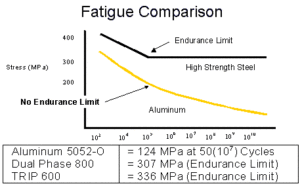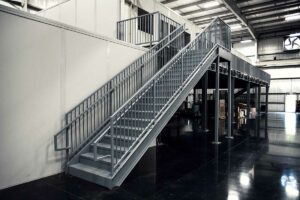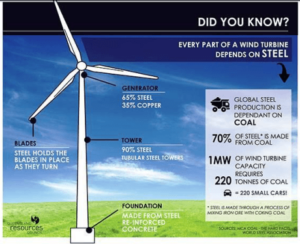
Steel, a carbon-iron alloy, and aluminum, a metal, are two of the most highly used materials on Earth, especially within industrial applications. Aluminum’s silvery-white appearance and lightweight properties compared with steel’s high tensile strength and low cost are just a few of their many distinctions, allowing for a wide span of differences when it comes to applications in the industrial spectrum.
Benefits of Aluminum and Steel

Apart from being 100% recyclable and non-toxic, Aluminum’s properties make for a non-combustible, non-sparking, and non-magnetic material that’s generally painless to work with. Its ease of fabrication combined with its flexible nature gives aluminum handlers the ability to produce precise, close tolerances with superb design freedom and cost-effective production. Additionally, aluminum is corrosion-resistant, resilient, and exhibits increased strength in colder environments.
Steel’s durability and low-cost qualities are its most noteworthy case for industrial fame. Its resistant capabilities are nearly unmatched, making it one of the strongest industrial materials. Steel has an enormous strength-to-weight ratio, and weighs 60% less than concrete, allowing for easier transportation and making various processes of construction and fabrication much faster. Additionally, steel is an eco-friendly option among metals and alloys, as it is recyclable.
Applications
Aluminum
Transportation
Aerospace is the preeminent stronghold for aluminum. Modern aircrafts use aluminum throughout and spacecrafts contain 50 to 90% aluminum alloys. Although not the heartiest metal, the motivation to increase fuel efficiency makes aluminum, with its lightweight nature, highly sought after in the automotive industry. Predictions anticipate the average aluminum content in a car will increase 60% over the next 7 years.
Construction – Modern Designs
Aluminum’s tendency to take intricate shapes make it a necessity for modern architects and allows freedom otherwise unable to be attained with materials such as wood or steel. High-rise buildings typically use aluminum, and its strength-to-weight ratio proves to be a speedy benefit during construction. Aluminum stairs are well-praised, with its rust-resistant characteristics.
Packaging & Consumer Goods
Aluminum is a bestseller with consumer products, with its non-toxic properties making it perfect for packaged foods, medications, and beverages. Aluminum is fundamental for electronics, with many of our smartphones, televisions, and laptops employing use of the metal.

Electrical
With its low density and non-corrosive properties, aluminum has quickly been replacing copper as an improved option for long-distance power lines – the ductility also allows it to be formed into wires more easily. Aluminum is also used in LED bulbs, television antennas and satellite dishes.
Steel
Construction – The Bones
Steel’s strength makes it a go-to for the construction industry. Steel is a staple of railways, roads, buildings and other infrastructures. Modern, strong structures like skyscrapers, stadiums, and airports opt for a durable steel frame system or steel skeleton.

Transportation
As it stands, steel accounts for 50% of the weight of an average vehicle. Besides dominating the pack on the automotive market, steel is likely to be found in transportation materials surrounding trucks, rails, jet engine components, ships, anchor chains and anything else requiring a high-strength capacity.
Energy

Energy outlets such as nuclear, natural gas, wind power and electric all need steel framework. Steel is used for resource extraction and heavy operational devices like cranes and forklifts, and the strength of steel is required for offshore platforms. Steel can also be found in energy regions such as transmission towers, transformer cores, electromagnetic shields and more.
Appliances and Misc
Over half of the weight of your fridge, oven, washing machine and many other household appliances come from steel. Other applications are strong metal stairs and construction materials such as screws or nails, and practical uses such as sculptures and framing.
The Faceoff
So which is better? All in all, the practicality of steel and aluminum spans far and wide. While aluminum is the most abundant metal on earth, steel is the favorite alloy. They are employed in similar industries but differ in terms of how they are applied.
Aluminum’s precision, lightweight properties and adaptability to harsh conditions make it most suitable for aerospace, consumer products and industries wanting a lightweight option without sacrificing strength.
Steel’s raw power, low cost and impressive strength make it the best option for load-bearing projects, and a leader in the construction, automotive and tooling industry.









